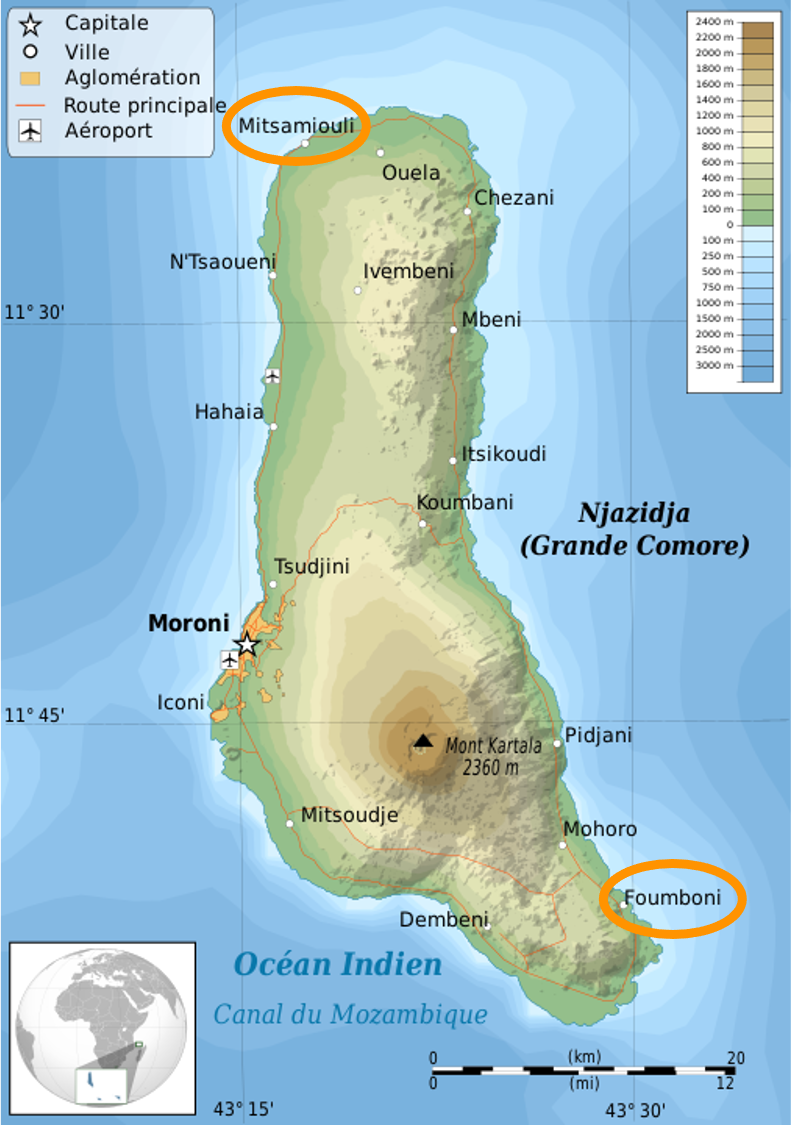Following the success of the construction of the first power plant located in Foumbouni, the Comorian state has decided to trust us once again with the construction of a second power plant.
Today, electricity production in the Comoros is mainly based on hydrocarbon generators. In addition to using fossil fuels, this system is not enough to power the country, where the rate of access to electricity does not exceed 50%. With its capacity of 4 MWp, the Mitsamiouli solar power plant represents a 13.5% increase in the electricity production of the Union of Comoros. The sunshine rate is 1,800 hours per year, which will produce 7,200,000 kWh per year, allowing the Comorians to save 2,400,000 litres of diesel oil per year.

This second power station, located this time in the north of the island of Grande Comore, will benefit from the same sun conditions and will have the same characteristics as the first, namely a power of 4 MWp installed (for 3 MW of power deliverable on the network), and the integration of a fleet of 1 MW/2.1 MWh batteries supplied by Tesla. The solar panels will be installed on trackers, which follow the course of the sun and optimize production throughout the day. These batteries are essential. Without batteries, panels do not have the ability to operate in isolation. They produce energy with the energy they receive from the sun. If this energy is not used, it is lost, and when there is no sun, no electricity is produced. The use of batteries thus allow to store electricity produced during the day, when it exceeds demand, and then to re-inject it into the grid at the time of peak consumption.
The second plant will be located on an open landfill. Unfortunately, this land is unsuitable for any agricultural use. Once depolluted (the operation began in early March), this land will be upgraded with the installation of this solar power plant which is scheduled to go into service in 2023.
The Mitsamiouli solar power plant will help develop access to electricity in a sustainable way, in a country where this resource is lacking to ensure stable economic and social development. In addition, for the construction, we hired local companies contributing to employment and skills transfer.

Convinced of the merits of crowdfunding, we propose this project on the Lendosphere platform. We have already funded some 30 projects on this platform. Crowdfunding allows citizens to be involved in projects that make sense to them in a direct and traceable way. To learn more, visit the Lendosphere page dedicated to the project.

0 Comments